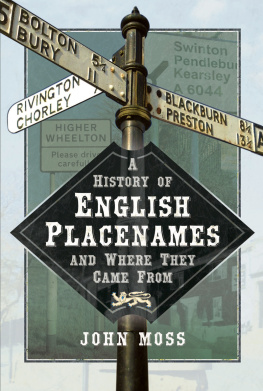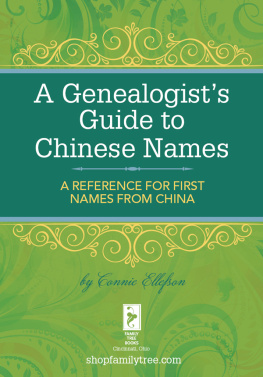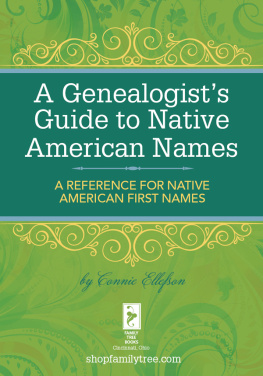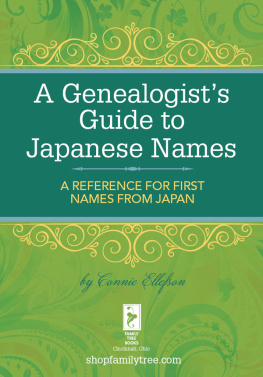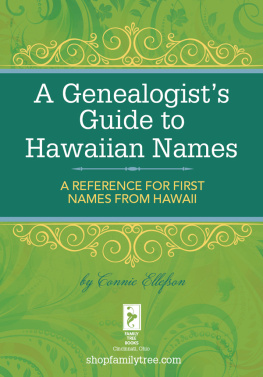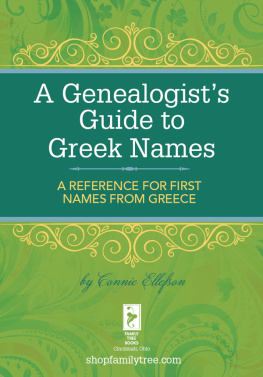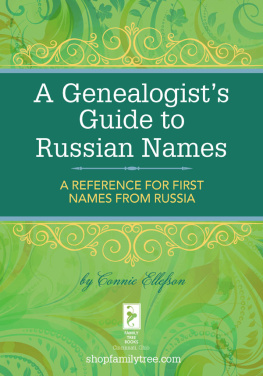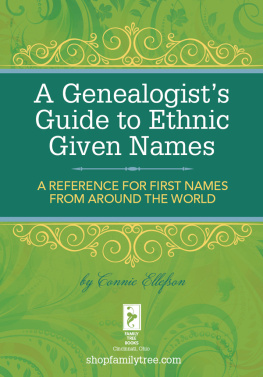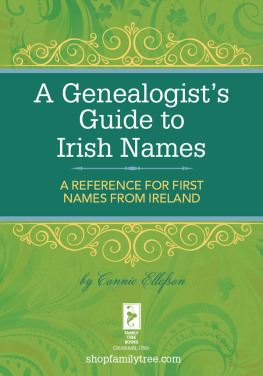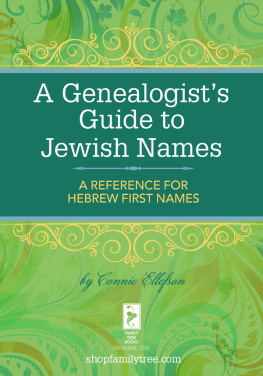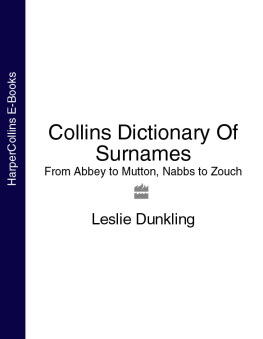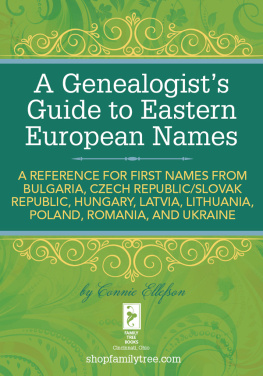Pagebreaks of the print version

Great British Family Names & Their History
For Gloria, the love of my life
Great British Family Names & Their History
Whats in a Name?
John Moss

First published in Great Britain in 2019 by Pen and Sword History An imprint of Pen & Sword Books Ltd Yorkshire - Philadelphia
Copyright John Moss, 2019
Hardback ISBN 9781526722805
Paperback ISBN 9781526751553
eISBN 9781526722812
Mobi ISBN 9781526722829
The right of John Moss to be identified as Author of this work has been asserted by him in accordance with the Copyright, Designs and Patents Act 1988.
A CIP catalogue record for this book is available from the British Library.
All rights reserved. No part of this book may be reproduced or transmitted in any form or by any means, electronic or mechanical including photocopying, recording or by any information storage and retrieval system, without permission from the Publisher in writing.
Pen & Sword Books Ltd incorporates the Imprints of Pen & Sword Books Archaeology, Atlas, Aviation, Battleground, Discovery, Family History, History, Maritime, Military, Naval, Politics, Railways, Select, Transport, True Crime, Fiction, Frontline Books, Leo Cooper, Praetorian Press, Seaforth Publishing, Wharncliffe and White Owl.
For a complete list of Pen & Sword titles please contact
PEN & SWORD BOOKS LIMITED
47 Church Street, Barnsley, South Yorkshire, S70 2AS, England
E-mail:
Website: www.pen-and-sword.co.uk
or
PEN AND SWORD BOOKS
1950 Lawrence Rd, Havertown, PA 19083, USA
E-mail:
Website: www.penandswordbooks.com

A map depicting the regions of Great Britain.
Foreword
Some places are named after people; some people are named after places. Many ancient family names predate Norman times, and are veiled in long forgotten nomenclatures and spellings. Some names bear little resemblance to those we learned in childhood; Latin, Brythonic Celtic, Welsh, Anglo-Saxon, Germanic, Norse and French names many barely in a form of English that we might recognise.
Names that are built into the history and topography of the land, and that provide an insight into who we are and why the place where we live came to be. Names that hold mysteries and often come as revelations when their meanings are unlocked.
They reflect the long and chequered history of Great Britain and the numerous invasions and incursions that have taken place over the centuries. Romans, Angles, Saxons, Jutes, Danes and Normans. They all came. They settled here and made us what we are, and the melting pot of dialects and languages they brought with them has been synthesised over time into what has by now become an international language a complex, eloquent tongue that the rest of the world seems eager to learn.
Surnames are a relatively recent occurrence. Before the Norman Conquest, people did not have them as such; they were known by a personal name or nickname. After 1066 however, Norman overlords introduced surnames as a way of identifying the subjugated people over whom they ruled. So the practice gradually became commonplace, and old Saxon and Celtic names fell out of use.
Of course, the origin of many common surnames is straightforward, as they are derived from specific occupations, of which Baker, Tailor, Weaver, Smith, Thatcher, Tanner, Butcher, Carpenter, Carter, Shepherd and Fletcher are examples. There are innumerable others. Many surnames are derived from the more obvious British counties and cities, (Chester, Poole, York, Devonshire and Hampshire, for example). Therefore, I have not included any of these, because their sources are so self-evident as to require no explanation.
Furthermore, most of the names I have included originated long before the structure of the English language was established. Variations are more often the rule than the exception. Even within close blood ties, members of the same family frequently used different spellings for their surnames. Names also tend to evolve naturally, so that over time the final version often bears scant affinity with its original form. Therefore, wherever possible, I have tried to include some of the variations that exist.
Many old Norman names include the prefixed preposition de, (from the French, meaning of or from), indicating their place of origin, as in examples like De Boynton, De Mowbray or De Conyers. Many constituted the embryonic forms of surnames, which became necessary when detailed accounts of landownership were drawn up, as was the case of the 1086 Domesday Survey. However, over time, as people assimilated into English culture, with very few exceptions, these tended to be dropped.
In addition to a comprehensive bibliography of sources used in compiling this book, I have included details of those websites which I have found particularly helpful. There are far too many possible names to include them all, but I believe these websites will go some way to facilitate further investigation by the reader. They have proved especially useful in relating to the ancient Scottish and Irish clans and families.
Northern Ireland, (or Ulster), posed its own particular problem, since it did not exist as a clearly defined entity until the twentieth century, since when the Republic of Ireland, (or Eire), has no longer been part of Great Britain. Nevertheless, many of its ancient family names stem from a time when the whole island of Ireland, both Eire and Ulster, were part of a unified nation. Therefore, I felt obliged to disregard its more recent political partition and include family names no matter in which part of Ireland they originated.
Despite the fact that the twenty-first century has seen so much material readily available online, and it has proved to be a great time-saver, I have made references wherever possible to reliable entries in the Anglo-Saxon Chronicles . I have also used as a starting point, the Roll at Battle Abbey, which includes the names of all the knights, dukes, counts and barons who attended William at Hastings, as well as those who had furnished the expedition with ships, horses, men, finance and supplies for the venture.
History shows that the transition from Saxon to Norman Britain was painful and protracted. William brooked no opposition to his new order and dealt brutally with any form of dissent, allowing his barons a free hand in their pillage of England. Lands that had been held by Saxon thegns for many years were confiscated and distributed liberally among the so-called Companions of William. Peasants fared no better than their masters. In the year 1067, the Anglo-Saxon Chronicles recorded that the king set a heavy tribute on poor folk, though still nevertheless let his men harry all that they went over. It also records that in 1070, the king allowed all the monasteries in England to be plundered. In 1082, it declared that there was much famine.
I have also made numerous references to the Domesday Book , William the Conquerors great audit of 1086, so-called because in its day it was likened to the final day of judgement. The implications, the scope and extent of the survey were also described in the Chronicles . In 1087, a year after Domesday , it recorded that there was not a hide of land in England that he [William] knew not what he had from it, and what it was worth, after it had been set down in his document.


